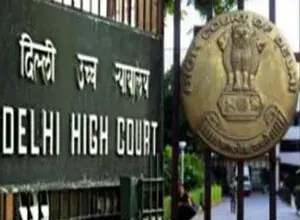Revised Royalties For Broadcasting Sound Recordings
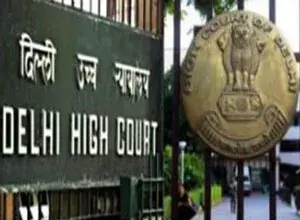 The High Court of Delhi has invited suggestions regarding the revision/fixing of royalties for communication of ‘sound recordings’ to the public by way of broadcast through Radio under section 31D of the Copyright Act, 1957. Several Petitioners sought interim relief to seek continuation of the pre-existing rate of royalties as fixed by the erstwhile IPAB, till final disposal.
The High Court of Delhi has invited suggestions regarding the revision/fixing of royalties for communication of ‘sound recordings’ to the public by way of broadcast through Radio under section 31D of the Copyright Act, 1957. Several Petitioners sought interim relief to seek continuation of the pre-existing rate of royalties as fixed by the erstwhile IPAB, till final disposal.
Centre Amends Legal Metrology Rules to display MRP in Indian Currency
 The Legal Metrology Rules have been amended namely the Legal Metrology (Packaged Commodities) Amendment Rules, 2021. As per the amended Rules the unit price needs to be declared on each package along with the MRP in Indian Rupees. This puts additional compliance burden to be followed for pre-packaged commodities.
The Legal Metrology Rules have been amended namely the Legal Metrology (Packaged Commodities) Amendment Rules, 2021. As per the amended Rules the unit price needs to be declared on each package along with the MRP in Indian Rupees. This puts additional compliance burden to be followed for pre-packaged commodities.
In the same class, can multiple entities trademark under the same surname?
 Many individuals use family names/surnames as a part of their business identity or trading style, and in the course of trade, also as their trademarks, and seek to have the said surname trademark registered under the Trade Marks Act, in order to secure statutory protection therein. Even so, what is the position of the law vis-à-vis registration of surname trademark?
Many individuals use family names/surnames as a part of their business identity or trading style, and in the course of trade, also as their trademarks, and seek to have the said surname trademark registered under the Trade Marks Act, in order to secure statutory protection therein. Even so, what is the position of the law vis-à-vis registration of surname trademark?
Paytm Payment Bank Ltd. included under the 2nd Schedule of RBI Act
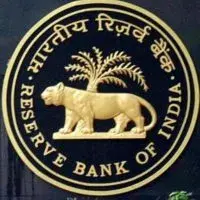 Commercial exploitation of musical copyrighted works has often led to legal battle on accounts of absence of a valid licensing agreement.
Commercial exploitation of musical copyrighted works has often led to legal battle on accounts of absence of a valid licensing agreement.
Counterfeiting of Luxury Goods- GUCCIO GUCCI S.P.A V/S Intiyaz Sheikh
 The famous fashion brand claimed that the defendant was involved in manufacture and retail of counterfeit and sub-standard goods (‘socks’ as well as ‘packaging material’) incorporating their world-renowned ‘GUCCI’ logo as well as the green and red stripes.
The famous fashion brand claimed that the defendant was involved in manufacture and retail of counterfeit and sub-standard goods (‘socks’ as well as ‘packaging material’) incorporating their world-renowned ‘GUCCI’ logo as well as the green and red stripes.
Royalties For Broadcasting Sound Recordings Revised
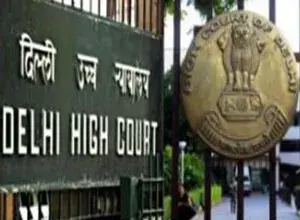
The High Court of Delhi on November 10, 2021, issued a public notice, inter alia inviting suggestions regarding the revision/fixing of royalties for communication of ‘sound recordings’ to the public by way of broadcast through Radio under section 31D of the Copyright Act, 1957 and Rule 31 of the Copyright Rules, 2013. The said order can be accessed from the Delhi High Court’s website at https://delhihighcourt.nic.in/writereaddata/Upload/PublicNotices/PublicNotice_SIGLWQIP4Z3.PDF.
Revision/fixing of royalties for communication of ‘sound recordings’
The background/ context of the said notification is the ongoing matter no. C.O.(COMM.IPD-CR) 14/2021 and other similar matters before the Hon’ble High Court of Delhi, wherein various radio broadcasting organizations had filed petitions with the Hon’ble Court, inter alia seeking revision of statutory license rates under Section 31D of the Copyright Act, 1957, read with Rule 31(9) of the Copyright Rules, 2013, for broadcasting sound recordings. In these cases, the Respondents were music recording labels as well as Copyright Societies (like the Indian Performing Rights Society Limited (IPRS). Pertinently, all these petitioners sought interim relief to seek continuation of the pre-existing rate of royalties as fixed by the erstwhile IPAB, till final disposal.
With this background, the public notice provides for the following:
- It informs all the interested parties (any copyright owner or broadcasting organization or radio broadcaster or any other ‘interested person’) regarding the Intellectual Property Division of the Hon’ble High Court of Delhi’s intention to revise/fix royalties for broadcast of sound recordings through Radio.
- It invites suggestions of all the interested parties in this regard.
- The interested parties may give suggestions in writing, with adequate evidence within thirty days of publication of this notice i.e. before December 10, 2021.
- The suggestions are to be sent to ipd-copyright@dhc.nic.in
Thus, the above is a valuable opportunities to all relevant stakeholders/ interested persons to voice their views and concerns regarding statutory licensing, royalties, lacuna in 31D, etc.
Related Posts
As Per Legal Metrology Rules Centre Amends to display MRP in Indian Currency

By Rupin Chopra and Apalka Bareja
The Ministry of Consumer Affairs, Food and Public Distribution has notified the Legal Metrology (Packaged Commodities) Amendment Rules, 2021 vide its Notification dated November 02, 2021[1]. The New Rules further amend the Legal Metrology (Packaged Commodities) Rules, 2011. These Rules shall come into force on April 01, 2022.
The following key amendments have been made by the Central Government in exercise of the powers conferred by sub-section (1) read with clause (j) and (q) of subsection (2) of section 52 of the Legal Metrology Act 2009:
| Rule | Old Rules | Amended Rule | Comments |
| Rule 2(aa) | Earlier Rule 2(aa) provided that for the words, brackets, letters and figures ―clause (d) of sub-section (1) of section 2 of the Consumer Protection Act, 1986. | The New Rules under Rule 2(aa) are to be substituted with the words, brackets, letters and figures ―clause (7) of section 2 of the Consumer Protection Act, 2019. | Rules 2(aa) has been amended in view of the Consumer Protection Act of 2019, which defines a “consumer” under clause (7) of section 2. |
| Rule 4 | Earlier Rule 4 provided for Regulation for pre-packing and sale etc. of commodities in packaged form. | The amended Rules inserts a sub rule (1) and states that When one or more packages intended for retail sale are grouped together for being sold as a retail package on promotional offer, every package of the group shall comply with provisions of rule 6. | The amended Rules provide that when packages are grouped together for retail sale then each package in the group shall comply with the mandatory declaration to be made on every package. |
| Rule 5 | Rule 5 provided for the Specific commodities to be packed and sold in recommended standard packages | The Amendment Rules of 2021 omits Rule 5 | Rule 5 has been omitted. |
| Rule 6(1) (d) | Earlier Rule 6(1)(d) provided that month and year in which the commodity was manufactured or pre-packed or imported shall be mentioned in the package. | The New Rules omits the words “―or pre-packed or imported”. Hence, the New Rule provides that month and year in which the commodity was manufactured shall be mentioned in the package. | Hence, the package now needs to mention the month and year in which the commodity was manufactured and month and year in which commodity was packed or imported does not need to be declared. |
| Rule 6(1)(e) | This Rule deals with the declaration of Retail sale price on the package. Earlier the Rule stated that the package shall clearly indicate the MRP and the price in rupees and paise shall be rounded off to the nearest rupee or 50 paise. | The New Rule provides that the declaration of retail sale on packaging shall be provided in the Indian Currency. | Hence, Amended Rules while doing away with declaration in Rupees and paise, simplifies the declaration of MRP on packaging by providing that the MRP should be declared in “Indian currency”. |
| Rule 6(11) | – | A new provision has been inserted to indicate the unit sale price on pre-packaged commodities. Unit price is to be declared on your packages in any of the following format:
1. “Rs. __ per g” for pre-packaged commodities with net quantity of commodity less than one kilogram; 2. “Rs. __ per kg” for pre-packaged commodities with net quantity of commodity more or equal to one kilogram; 3. “Rs. __ per cm” or pre-packaged commodities with net length of the commodity less than one meter; 4. “Rs. __ per meter” for pre-packaged commodities with net length of the commodity more or equal to one meter; 5. “Rs. __ per number”; 6. “Rs. __ per ml” for pre-packaged commodities with net volume of the commodity less than one liter; 7. “Rs. __ per liter” for pre-packaged commodities with net volume of the commodity more or equal to one liter.
|
Now, the unit price needs to be declared on each package along with the MRP in Indian Rupees. This puts additional compliance burden to be followed for pre-packaged commodities. However, this will allow easier comparison of prices while buying a product.
|
| Rules 13(5)(ii) | Earlier Rules 13(5)(ii) provided for the Statement of units of weight, measure or number and stated that For items sold by number the symbol should be N or U. | The Amended Rule states that for items sold by number, the number or unit or piece or pair or set or such other word which represents the quantity in the package shall be mentioned. | The Amended Rules provides for representation of number or unit or piece or pair or set through word which represent the quantity on the package instead of representation of the symbol N or U on the package as required earlier. |
| Rule 18(7) | The Old Rule under 18(7) was applicable to all retailers covered under the Value Added Tax VAT or Turn Over Tax (TOT). | The Amended Rule substitutes the word “the Value Added Tax VAT or Turn Over Tax (TOT)” with “Goods and Service Tax”. | In view of the amendment the provisions relating to whole sale dealers and retail dealers cover retailers under the “Goods and Service Tax” i.e. GST only. |
The Amended Legal Metrology Rules are all set to come into force in April next year. The Amended Rules are a step ahead towards consumer welfare and are in consonance with the new Consumer Protection Act of 2019.
[1] https://consumeraffairs.nic.in/sites/default/files/file-uploads/latestnews/230946.pdf
Related Posts
Legal Metrology, Packaging and Labelling Laws
Can multiple entities trademark the same surname under same class?

Our family names are a crucial part of our identity as they carry familial, cultural, and historical values. Oftentimes, many individuals also use family names/surnames as a part of their business identity or trading style, and in the course of trade, also as their trademarks, and seek to have the said surname trademark registered under the Trade Marks Act, in order to secure statutory protection therein. Even so, what is the position of the law vis-à-vis registration of surname trademark?
Section 11(1) of the Trade Marks Act, 1999, states that a trademark that is similar to an earlier trademark, and in respect of the same/similar goods and services, and therefore, likely to cause confusion, is not registrable. However, Section 11 provides an exemption under Section 12 of the Trade Marks Act, 1999, which allows registration of trademarks on basis of honest concurrent use.
Further, Section 35 of the Trade Marks Act, 1999, provides that a proprietor or registered user of a registered trademark is not entitled to interfere with the bonafide use of his own name by a person.
Thus, on a combined reading of the aforementioned provisions of the Act, it can be inferred that surnames may be allowed to be registered as trademarks under the Trade Marks Act, 1999. This assumption holds merit as several people have been using their surnames as their trademarks or trade names, and have also been granted trademark registration for the same by the Trade Marks Registry.
However, as multiple people are registering/seeking to register their surnames as trademarks, there could understandably be a risk of confusion amongst the general public and members of the trade with regard to the source of the said trademark.
Registration of the same/similar surnames by multiple persons would lead to the dilution of the primary purpose of obtaining statutory protection over the same, as one may not be able to claim exclusive right over the surname or stop other people from using it, especially with respect to similar/ identical goods and services. On the other hand, preventing one from registering/using their surname as their bonafide adopted and used trademark may also be against the principle enshrined in Sections 12 and 35 of the Trade Marks Act.
This tug-of-war between maintaining exclusivity of trademarks on one hand, and allowing bonafide use/registration of the same name by multiple proprietors, has led to a plethora of case laws over the years, and Courts have taken varied stands on the issue.
CASES WHERE SAME SURNAME WERE ALLOWED:
In Precious Jewels v. Varun Gems[1], the registered proprietor of the trademark “RAKYAN” obtained an injunction against the trademark “NEENA AND RAVI RAKYAN” in the name of Defendant. However, the Hon’ble Supreme Court held that the injunction order was unjust since the Defendant was bonafide user of the disputed mark, and observed that “A man is entitled to use his own name honestly and fairly and if he does so, he cannot be restrained even if some confusion arises”.
Similarly, in the case Somashekar Patil v. D.V.G Patil[2], Plaintiff claimed that Defendant was infringing on his right by using the name “PATIL”. The Court, on the other hand, found that both parties were using the surname PATIL for their separate businesses because they were related to the Patil family and that the Defendant was a genuine user of the name “Patil” by virtue of the same.
Moreover, in the case of Goenka Institute of Education & Research v. Anjani Kumar Goenka and Ors[3], both parties were using the name “GOENKA” as a part of their trademarks, i.e., “GOENKA PUBLIC SCHOOL” and “G.D. GOENKA PUBLIC SCHOOL”, and the Court allowed the Appellant to use the name “GOENKA” with certain conditions, as both parties had started using their marks around the same time, and “GOENKA” formed a part of the Appellant’s Trust’s Name, thereby deciding that there was honest concurrent use by the Appellant. Thus, the Court ruled in favor of the Appellant and allowed the rival marks to co-exist for the same services.
WHERE THE SAME NAME WAS NOT ALLOWED
On the other hand, in the case Skipper Limited v. Akash Bansal & Ors[4], the Court observed that a person should be allowed to use his own name for his business and if any confusion is caused, the same should not be a ground to restrict the person from using his name in respect of his business. However, the Court also held that “if a person oversteps that right and does anything in excess of his aforesaid right which would result in deception, he should be restrained in an action of passing off”. The Court went on to decide the matter in favour of the Petitioner, inter alia stating that adoption of the same name “BANSAL” by the Defendant alongwith the common field activity of both parties, “was likely to deceive and the defense of honest and bonafide use was not sustained”. Similarly, in Bajaj Electricals Limited v. Metals & Allied Products & Anr[5], Bajaj Electricals were successful in injuncting the Defendant firm from using the mark “BAJAJ” (from the name of their partner, Mr. Surender Bajaj), and the Court held that the Defendant had adopted the trademark BAJAJ with a dishonest intention to pass off their goods as those of the Petitioner.
Moreover, in the case of Dr. Reddy’s Laboratories v. Reddy Pharmaceuticals[6], the point of contention was the surname “Reddy” by Defendant, who claimed that since “Reddy” is a common surname (derived from the name of their Managing Director), there could be no monopoly on the same. However, it was observed that the Plaintiff’s prior trademark ‘” Dr. Reddy”’ had acquired distinctiveness, as well as goodwill and reputation in the pharmaceutical sector, and the adoption of the mark “Reddy” in respect of similar products, i.e., pharmaceutical preparations by the Defendant, was dishonest and not an honest or concurrent use.
DISTINCTIVENESS OF THE NAME
An important factor that may be taken into consideration is the unusualness of the surname – for instance, certain Indian surnames like Singh, Gupta, Patel, etc. can prima facie said to be non-distinctive and therefore may not be monopolized by a single proprietor.
On the other hand, uncommon names such as Tata, Premji, Ambani, etc. have a higher degree of distinctive character, and therefore may have a greater degree of protection against subsequent use/registration by other entities.
In this regard, an additional issue is that even if proprietors are able to get their surnames registered as trademarks, they may not be able to successfully enforce the same against third parties who may be honestly and bonafide using / registering the same surnames, even for similar services/goods, depending on the distinctiveness of the surname, unless they have acquired secondary character with regard to a particular proprietor on account of long and extensive use.
FACTORS TO DECIDE ‘BONAFIDE USE’
From the aforesaid analysis, it appears that due importance is given to not only to the reason for adoption of the trademarks (i.e., from names/surnames) but also to:
- The relevant date of adoption of the trademarks;
- The area of business under both trademarks; as well as
- The distinctiveness and/or reputation accrued in the earlier trademark.
Thus, based on the aforesaid factors, while both parties were allowed to register the trademark GOENKA in respect of similar services, the subsequent adoption of the trademark REDDY for pharmaceutical products was held to be dishonest.
CONCLUSION
To sum up, it is important to understand that in the absence of any statutory prohibitions, surnames may be allowed registration, however, registration itself may not play a beneficial role as it may not grant real exclusivity on the same, and moreover, the trademark may not be enforceable against other trademarks unless a high degree of distinctiveness and reputation is established, alongwith the malafide intention of the subsequent proprietor. In such cases, it is very important to strike the right balance between allowing a person the bonafide use of his/her name, and also preventing any likelihood of confusion or association that may arise due to the use/registration of the same name in respect of the same/similar goods and services.
[1] 014 (60) PTC 465 (SC)
[2][2] Misc F.A No. 2707 of 2018, Karnataka High Court
[3] 2009 (40) PTC 393 (Del)
[4] 2016 SCC OnLine Cal 983
[5] AIR 1988 Bom 167
[6] 2004 (29) PTC 434 (Del)
Related Posts
The SHRI RAM School Trademark Conflict and Ruling on Bonafide Use
Paytm Payment Bank Ltd. included in 2nd Schedule of RBI Act
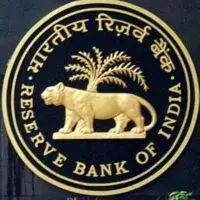
Introduction
On October 7, 2021, the Reserve Bank of India (RBI) issued a notification titled “Inclusion of Paytm Payments Bank Limited” in the Second Schedule of the Reserve Bank of India Act, 1934. In the notification, while directing all Scheduled Commercial Banks (SCBs), RBI stated that “Paytm Payments Bank Limited” has been included in the Second Schedule to the Reserve Bank of India Act, 1934.
Paytm Payment Bank Ltd. is a Non-government Banking Company registered under Section 3 of the Companies Act, 2013. Under Section 42(6)(a)(iii), the RBI is conferred with the powers to direct inclusion in the Second Schedule of any bank not already so included which carries on the business of banking in India.
The Reserve Bank for India Act, 1934 was enacted with the purpose of providing an instrument for regulation of Bank notes and keeping a reserve for ensuring monetary stability in the country. The Reserve Bank of India (RBI) was established under the act for managing the currency and carrying on business of Banking efficiently in India. For the purpose, the act was constructed with the adequate provisions for the regulation of other banks in India and accordingly enabled RBI to include banks in Second Schedule of the act for the application of its provisions. These banks are called scheduled banks.
Second Schedule and Associated Provisions
The Second Schedule of the Reserve Bank of India Act, 1934 provides a list of Scheduled Banks as per Section 2(e). The Scheduled Banks are regulated essentially under Section 42 of the Act.
Section 42 of the Act talks about cash reserves of Scheduled Banks to be kept with the bank. It states that every bank included in the Second Schedule shall maintain with the Bank an average daily balance of amount which shall not be less than such per cent of the total of the demand and time liabilities in India of such bank as shown in the return referred to in Sub-section (2), as the Bank may from time to time, having regard to the needs of securing the monetary stability in the country, notify in the Gazette of India. “Average daily balance’’ is the average of the balances held at the close of business on each day of a fortnight, starting from Saturday to Friday and inclusive of both days. The section imposes liability on banks where these liabilities shall not include the 4 exceptions as enumerated under section 42(1) (c) of the Act.
Conclusion
Scheduled Banks as listed under Second Schedule shall comply with the criteria of maintaining cash reserves with the Bank. Paytm Payment Bank Ltd. was recently added to this list by the RBI after observing the growing banking business.
Reference:
RBI Notification on Inclusion of Paytm Payments Bank Ltd. in Second Schedule
Related Posts
India: Reserve Bank of India cautions regarding risk of virtual currencies including Bitcoins
Luxury Goods Counterfeiting Between The – GUCCIO GUCCI S.P.A V/S Intiyaz Sheikh

By Priya Adlakha and Deepika Shrivastav


Issues of trademark infringement and passing off were recently brought up for discussion before the Delhi District Court at Tis Hazari, when luxury fashion house GUCCI filed a suit for infringement and passing off against Shipra Overseas, owned by one Intiyaz Sheikh. The fashion brand claimed that the defendant was involved in manufacture and retail of counterfeit and sub-standard goods (‘socks’ as well as ‘packaging material’) incorporating their world-renowned ‘GUCCI’ logo as well as the green and red stripes which are distinctive of the brand. The plaintiff moved a Delhi District Court for grant of permanent injunction against the defendant so as to restrain them from infringing their trademark, copyright, passing-off their trademarks, etc.
FACTS
- The plaintiff is a leading luxury fashion house whose products are some of the most sought-after luxury goods in the world. The plaintiff’s rights in the mark GUCCI date back to 1921 i.e. the date when the plaintiff company was founded and stand officially recognized since 1980 i.e. the date of first registration of the mark. Plaintiff’s rights in its GUCCI trademark as well as the green and red stripes logo stand valid, subsisting and with full legal force. The plaintiff’s products are available across the globe through independent and conglomerate stores as well as through various online retail portals.
- In 2019, the plaintiff through its field agents, had become aware that the defendants are engaged in the manufacturing and selling of large quantities of counterfeit merchandise, such as, socks and packaging material under its well-known GUCCI trademark as well as the green and red stripes Given the identical nature of the defendant’s logo and mark, it was claimed that the adoption and usage was evidently deliberate and not just a mere coincidence and was clearly intended to carry out misrepresentation and confusion amongst the public/consumers.
- Accordingly, the plaintiff filed a suit for permanent injunction for restraining the defendant and persons claiming under him from infringing their trademark and copyright and from passing off their goods as those of the plaintiffs, and also for rendition of accounts, delivery up etc.
- Along with the suit plaint, the plaintiff also filed an application for grant of ad-interim injunction under Order XXXIX Rule 1 and 2, read with Section 151 of the Civil Procedure Code as well as another application under Order XXVI Rule 9 seeking appointment of a Local Commissioner to visit the premises of the defendant and confiscate all infringing material being manufactured/procured by them, and also to inspect the books of accounts/inventories and other related documents pertaining to the defendant’s business.
- Vide Order dated April 24, 2019, the presiding judge in the District Court passed an ex-parte ad-interim order against the defendant and also appointed a Local Commissioner to visit the premises and confiscate all infringing material being manufactured/procured by the defendant and also to inspect the books of accounts/inventories and other related documents. Summons for the suit as well as the accompanying applications were also duly notified to the defendant.
- At the premises, the Local Commissioner and the local police found a large number of infringing products bearing the plaintiff’s trademark GUCCI as well as the green and red stripes Further, the Local Commissioner duly apprised the defendant’s representatives present at the premises of the Court’s order and the purpose behind their visit.
- When the matter was taken up on November 15, 2019, it was informed that the service of the summons on the defendant could not be completed as their premises were found to be locked. The plaintiff was accordingly directed to once again effect service upon the defendant and in case of non-availability of the defendant, to affix the summons at a conspicuous place at the house of the defendant. The matter was thereafter scheduled for a hearing on January 31st, 2020.
FINAL ORDER
Regarding Non-appearance of Defendant
Notwithstanding the fact that the service of the summons could not be completed owing to the defendant’s premises being locked, the Ld. Judge observed that since that the defendant’s subordinates (Manager, Supervisor and other staff) were present at the time of the raid and were supplied with the Court’s Order dated April 24, 2019, it can be concluded that the defendant is well aware of the pendency of suit and has deliberately not been appearing before the Court. Accordingly, the defendant was ordered to be proceeded ex-parte.
Regarding Reliefs claimed in the suit
The Ld. Judge granted a decree of permanent injunction in favour of the plaintiff while holding that the plaintiff has been successful in establishing its case for trademark infringement and passing off and also awarded damages of INR 2,00,000 as well as cost of litigation estimated at INR 1,66,000 to the plaintiff. Regarding the relief of rendition of accounts, the Ld. Judge observed that as not only the defendant has not participated in the present proceedings but even otherwise as no further averments have been made on behalf of Plaintiff for ascertaining or obtaining any such rendition of accounts, therefore, no orders/directions were passed in this regard. As regards delivery-up, the Ld. Judge directed that all infringing goods found at the premises of the defendant shall be handed over to the plaintiff for destruction/erasure etc. Hence, the suit was favorably decreed in favour of the plaintiff.
AUTHOR’S POINT OF VIEW
While the Ld. Judge has inter-alia also granted a decree of delivery-up of the sized goods, the actual implementation of such relief remains questionable. As mentioned above, the defendant’s premises were found to be shut down, thereby indicating that the defendant has absconded from the premises. In such a situation, it is unlikely that the plaintiff will be able to seek the delivery of the infringing goods from the defendants and in all probability, the counterfeit goods will be back in circulation in the market. Therefore, this poses a serious concern to all the brand owners.
A plausible solution to this concern is that at the time of seizure of the infringing goods, the plaintiff is given an option to preserve the said infringing goods/take its delivery from the defendant at its own cost and risk. This would mitigate the risk of the defendant absconding from the premises with the infringing goods though the defendant may still fail to join the suit proceedings.
It is to be noted that the power of a civil court to pass a decree for delivery-up of the infringing goods/labels come from Section 135 (1) of the Trade Marks Act. Whereas, power to pass interlocutory orders to preserve the infringing goods comes from Section 135 (2) of the Act. The said sub-section does not specify that the plaintiff can also seek an order to preserve the infringing goods in its custody at the time of the commission conducted by the Local Commissioner or any time later during the pendency of the suit.
It is worth noting that the Copyright Act, 1957 differs in such situations and provides for preservation of the infringing goods in the custody of the owner of the copyright.
Relevant provision of the law is reproduced below:
Section 66 in the Copyright Act, 1957
- Disposal of infringing copies or plates for purpose of making infringing copies.—The court trying any offence under this Act may, whether the alleged offender is convicted or not, order that all copies of the work or all plates in the possession of the alleged offender, which appear to it to be infringing copies, or plates for the purpose of making infringing copies, be delivered up to the owner of the copyright.
This begs for a shift in law especially in cases where the plaintiff pleads that the defendant is a fly-by-night small business operator and there is a likelihood that he may not join the case proceedings after the seizure of the infringing goods by the Local Commissioner. In case the plaintiff is able to obtain a decree of delivery-up in its favour, the infringing goods lying in the custody of the plaintiff may then be directed to be destroyed. Whereas, if the defendant has a good case in defense and is able to get an order to vacate the ad-interim injunction, the court may then direct the plaintiff to deliver-up the infringing goods to the defendant as is usually allowed in cases where the ad-interim injunction orders are vacated.
This would strike a balance between the plaintiff’s interest in the destruction of the counterfeit goods as well as the consumers whose interest the brand owners as well as the courts are liable to protect.
https://docs.google.com/viewerng/viewer?url=https://lawstreet.co/secure/uploads/pdfs/lj_2802_Gucci_Gets_Permanent_Injunction.pdf


